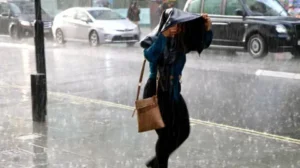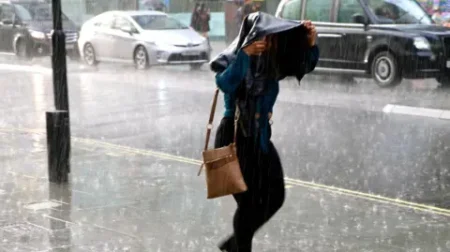### Recovery of Swan Populations on the Thames
The iconic swans of the River Thames are witnessing a hopeful resurgence in numbers, marking a significant turn after years of alarming declines attributed to various environmental pressures. Recent results from an annual royal survey indicate that the swan population has begun to rebound, instilling optimism about the future of these magnificent birds.
This annual survey, known as “swan upping,” is a time-honored tradition that involves a five-day search along the River Thames. Officially completed just recently, the survey has found a total of 115 young swans, known as cygnets, as opposed to the mere 86 counted the previous year. This increase signals a potential reversal in the alarming trend of decreasing numbers previously observed.
### Context of Decline
Historically, “swan upping” has been a method of monitoring swan populations while providing care and medical assessments for the young swans identified during the survey. Unfortunately, in recent times, the count had taken on a more somber tone as the numbers dwindled due to various factors, including devastating outbreaks of avian influenza and alarming incidences of human cruelty. Reports have emerged detailing incidents where swans were attacked with catapults and by gunfire, highlighting a disturbing trend that added to the pressures these birds face.
Despite these challenges, the latest figures released by David Barber, the King’s swan marker, showcase a more uplifting scenario. After witnessing a staggering 45% decline over the past two years, this year’s results may present a crucial turning point in the battle to preserve swan populations on the Thames.
### The Swan Upping Tradition
The tradition of “swan upping” dates back to the 12th century, initially established to manage and record royal assets as the monarchy holds ownership over unmarked mute swans in open waters. Presently, the event has transformed into a community spectacle that emphasizes conservation and education. Boats adorned with colorful flags traverse the river from Sunbury Lock in West London to Abingdon Bridge in Oxfordshire, where crews, dressed in ceremonial garb, engage in the counting, weighing, and health assessment of the swan population.
During the event, spectators gather along the banks of the river to witness this captivating blend of tradition and ecological awareness. The social component of the survey contributes to raising awareness about the importance of preserving wildlife, particularly swans, an emblematic feature of the Thames.
### Positive Outlook Amid Challenges
Despite the positive figures reflected in this year’s count, the overall numbers remain lower than the 155 swans documented in 2022. The King’s swan marker, Barber, expressed cautious optimism about a slowing number of avian flu cases reported in the Thames area. “It has been a particularly disastrous impact on swan populations,” Barber stated, suggesting the recent decrease in reported cases offers a glimmer of hope for recovery.
Yet, challenges persist for the swans, including pollution from oil spills, hazards presented by fishing tackles, attacks from domestic animals, and even instances of vandalism by humans. Barber’s commitment to raising awareness about the plight faced by swans resonates strongly within his efforts to discourage harmful behaviors, particularly those stemming from youth mischief.
### Conservation Efforts Moving Forward
As the swan upping tradition evolves from its historical roots into a modern conservation effort, the role of education plays a pivotal part in its success. Engaging educational institutions along the Thames serves to instill a sense of responsibility among the younger generation regarding the protection of swans. Barber himself emphasizes the significance of respect and care for wildlife, striving to prevent cruel behaviors against these vulnerable birds.
The recent findings show promising signs that swan populations on the Thames may indeed be on a path to recovery. As communities unite in the spirit of conservation, the iconic image of swans gliding gracefully along the river appears increasingly secure, inviting all to participate in their ongoing preservation.









